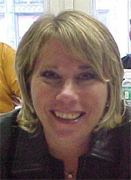| Meteorology- How's the Weather?
Project URLs:
http://teachersnetwork.org/teachnetnyc/
bglasgold/weather.htm
http://teachersnetwork.org/teachnet-lab/ps101/bglasgold/wind.htm
http://teachersnetwork.org/teachnet-lab/ps101/bglasgold/airpressure.htm
HOW IT WORKS
Start the lesson by brainstorming "meteorology" for
topics to be used for research from the World Wide Web. From these topics
create a semantic web on the computer using SuperPrint. After a lengthy group
discussion, students and teacher will decide on the topics to be included for
the research database. Students will use a database program (like AppleWorks)
to create their database. The teacher will do some research to locate on-line web
sites that the students can go to gather this information. The teacher will
link the web sites for the children's ease of use. The student, therefore, is using the
Internet to access data, and using the computer, AppleWorks, to organize
his/her data.
From the topics that were used on the
database, the teacher will divide the unit, meteorology, into at least four or
five subtopics. For example, wind, air pressure, humidity, cloud formations,
and storms. For each topic, students will research that topic, create
instruments that we can use to predict the weather, and make scientific
predictions about the weather!
THE STUDENTS
The students involved are the fifth grade
science classes, and the fifth grade science club. They are of average ability
level, and quite capable of doing this work. They will be working in small
groups- 3-4 at a time on the research projects as well as the creating of the
instruments.
WHAT YOU NEED
AppleWorks, ClarisWorks or any word
processing program, Grolier's Multimedia Encyclopedia, KidPix, Netscape Page
Composer, SuperPrint, Encarta '99, scanner to scan photographs of instruments
made in class, and the Internet.
STANDARDS
Students will produce a report of information
(English Language Arts). Students will write in Scientific Notation ( the
Scientific Method when doing weather instruments and predictions). Students
will build weather instruments (psychomotor). Students will be able to use the
Internet as a tool for research (cognitive).
OVERALL VALUE
The overall value of this unit, in addition to teaching children the creative field of meteorology, is to get them used to using
the computer in their everyday world. They will be gathering information from
the World Wide Web and on-line encyclopedias, learning to navigate their way
around the computer at the same time as gathering information. They will learn
what instruments meteorologists use to predict the weather, and then are able
to make their own predictions about the weather by reading their instruments. I
think this unit can be adapted to children as low as second grade level. I have
made simple barometers with second graders. It is an excellent method to show
scientific thinking.
|

Bonnie Glasgold teaches
enrichment classes at PS101 in Bensonhurst, Brooklyn and is a TeachNet
Project Mentor.
Email BMGLAS@aol.com
Estimated Class Periods To Complete: 4
Subject: Science
Subject 2: Social
Studies
Beginning Grade Level: 5
Ending Grade Level: 5
|